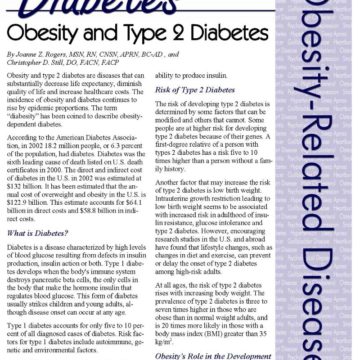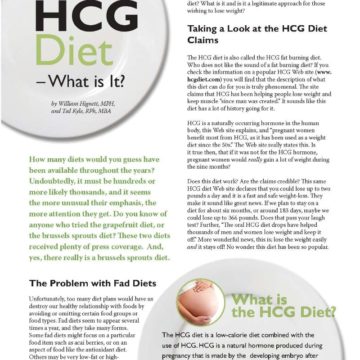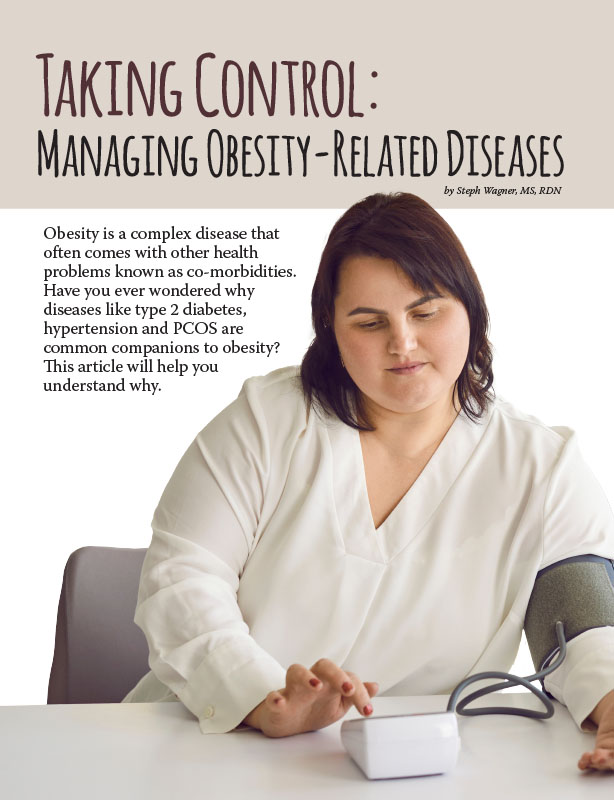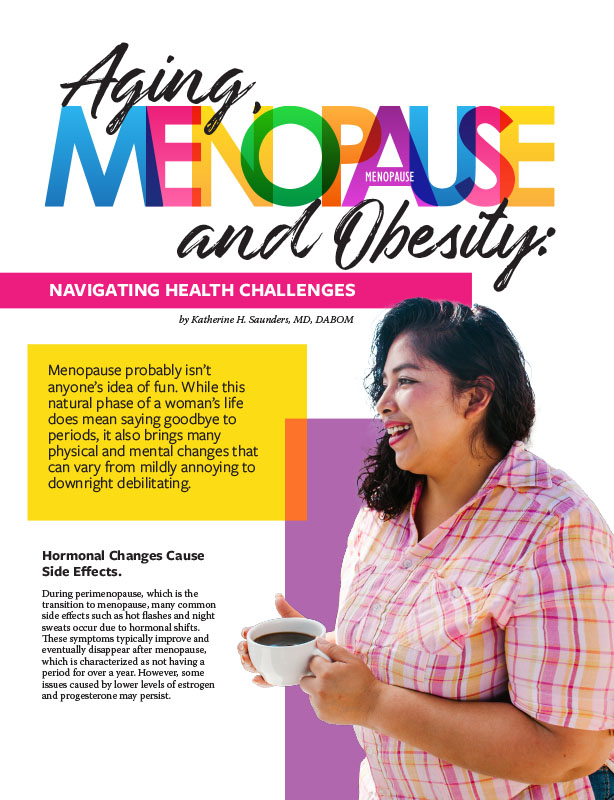Obesity Due to a Virus: How this Changes the Game

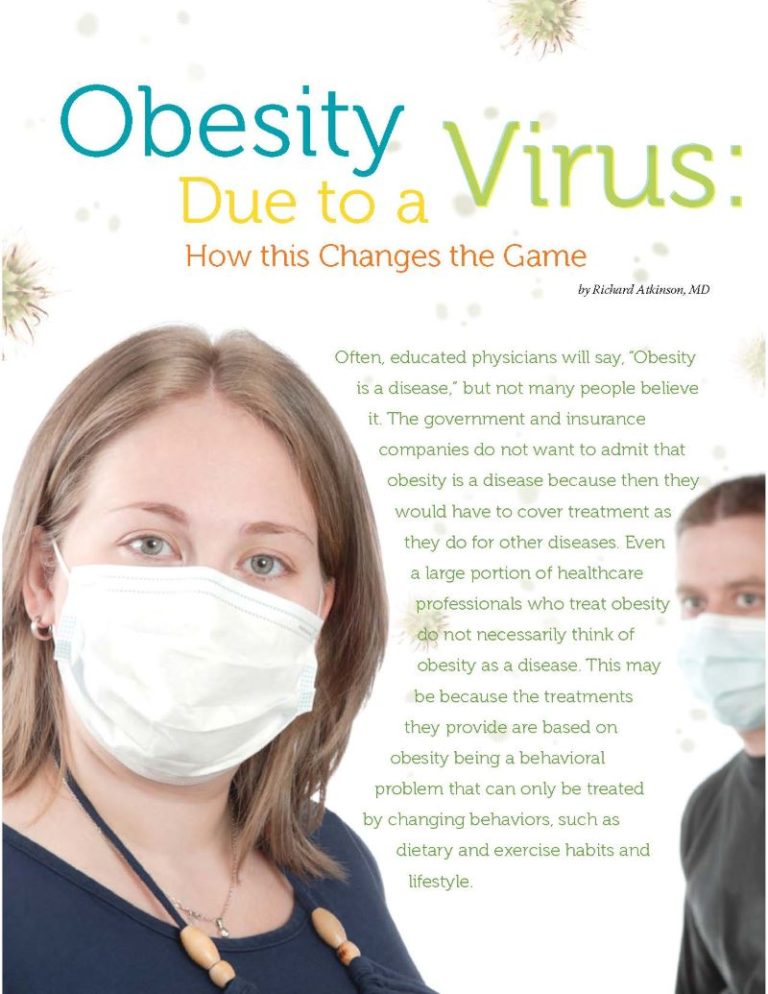
by Richard Atkinson, MD
Spring 2012
Often, educated physicians will say, “Obesity is a disease,” but not many people believe it. The government and insurance companies do not want to admit that obesity is a disease because then they would have to cover treatment as they do for other diseases. Even a large portion of healthcare professionals who treat obesity do not necessarily think of obesity as a disease. This may be because the treatments they provide are based on obesity being a behavioral problem that can only be treated by changing behaviors, such as dietary and exercise habits and lifestyle.
But, what if obesity could be “caught,” like the common cold? What if there was a virus that made experimental animals fat and was associated with obesity in humans? How would politicians and other policy makers act if they could become infected by obesity simply by being close to an infected person? Would this make any difference in healthcare policy or change the discrimination suffered by individuals affected by obesity?
What if being affected by obesity was not your fault?
Obesity Emerges as an Epidemic
Have you ever wondered why obesity all of a sudden became a problem in the United States? Why did suddenly, around 1980, the prevalence of obesity begin to skyrocket at a rate 10 times faster than from 1960 to 1980? Did you know that obesity began to skyrocket all around the world around 1980, in rich and poor countries alike?
Fast foods, sodas, TV, computers, microwaves, bigger portions, no exercise at school and lots of other things are said to have “caused” the obesity epidemic in America; however, poor countries like Paraguay and Panama do not have many of these luxuries, and certainly not as many as we do. So, why do they have a higher rate of obesity than we do? Something must have changed in the environment all around the world in a very short period of time. What could do that? The answer: an infection could do that.
Adenovirus-36 (Adv36) May Cause Obesity
There IS a virus that causes obesity. Adenovirus-36 (Adv36) is a human “common cold” virus that is easily caught from an infected person who is coughing or sneezing, or if they do not wash their hands after having a bowel movement. At least one-third of people affected by obesity have been infected and multiple investigators all around the world have started to work on this virus.
Researchers at the University of Wisconsin began experimenting with Adv36 around 1995 and found that when they experimentally infected chickens and mice, the animals increased their body fat by 50 to 150 percent. Compared to uninfected animals, about 60 to 70 percent of infected animals became affected by obesity. The investigators then tested monkeys by squirting Adv36 up their nose. This was an important experiment because Adv36 is a human virus and monkeys are the closest animal model to humans. One hundred percent of the infected monkeys gained weight.
A second experiment in a group of monkeys who had been in the animal facilities, from whom blood had been drawn and stored every six months for seven years, had Adv36 testing done on their blood. These monkeys were not deliberately infected, but all 15 became “naturally” infected throughout the seven years. Body weight was stable before infection, but once they tested positive for Adv36, they started to gain weight. The investigators speculated that their human handlers became infected and brought in the virus.
A critically important finding surprised the researchers – infected animals did NOT eat more and did NOT do less exercise, but they still gained weight. This virus causes obesity without changes in diet and exercise by changing metabolic rate and efficiency of food utilization.
Testing Adv36 in Humans
The researchers then began to test humans, both affected by obesity as well as some not affected, in Wisconsin, New York and Florida. The test for Adv36 is a blood test that is highly specific – if you have antibodies against Adv36, you have been exposed. More than 500 individuals were tested and the investigators found that 30 percent of the individuals affected by obesity and 11 percent of the individuals not affected by obesity had been infected. The infected people weighed more than 50 pounds more than the uninfected.
Since these early studies, now more than 15,000 people in nine different countries have been tested for Adv36 infection. The frequency of infection varies in different countries and ranges from 6 percent in Belgium/Holland to 65 percent in Italy. All but one research group has found the prevalence of infection to be 20 percent or greater and the average is about 40 percent. Studies in adults vary, but in all six known studies in children, Adv36 was associated in some way with obesity (see chart below).
How Contagious is Adv36?
A question that invariably is asked is, “Can I catch obesity from a person affected by obesity?” The answer is that it is very unlikely to be able to catch obesity from a person who has become affected by obesity due to the virus. The difference in metabolic rate is small, so it takes quite some time to gain large amounts of weight. The animal studies have the advantage of being able to tell exactly when the animal was infected and they showed that the virus persists two months or less. It takes much longer than two months to become affected by obesity, so the virus will be gone before the person gains a lot of weight.
Scientists have determined how the ADV36 virus works.
The DNA (genetic material) of the virus gets into the fat cells of the person or animal and causes them to bring in more fat and glucose from the blood and to make fat out of the glucose. The viral DNA also causes adult stem cells in the fat tissue to turn into fat cells, so the total fat cell number increases. Thus, an infected person will have bigger fat cells and more of them. Scientists have figured out the sequence of the DNA in Adv36, which gene in the virus causes the effect, and how this gene changes the chemistry inside fat cells to cause obesity.
What if I am Infected?
What can you do if you are infected? This is a critical question for most people, because who cares if you are infected if you cannot do anything about it? The bad news is that at the present time, there are no specific treatments for Adv36. If you are already affected by obesity, the usual problems of losing weight and keeping it off will apply.
The good news is that if you are currently not affected by obesity, it is a lot easier to prevent obesity than to treat it. Some of the anti-obesity drugs work very well to prevent weight gain. Policy changes in some states will be needed to allow Adv36 infected, non-affected by obesity people to go on obesity drugs to prevent weight gain.
More good news is that at least one paper shows that people who are infected with Adv36 lose weight better than uninfected people. So, it may be easier to lose weight; then, careful attention to diet, exercise and treatment with anti-obesity drugs may allow better weight maintenance. The bad news – people who are infected and lose weight may be more likely to gain it back more quickly if they do not pay attention to diet, activity and anti-obesity drugs.
Finally, some last good news – research is ongoing to identify antiviral agents that appear to work against Adv36 infection. And the best news of all, a vaccine has been developed that appears, in very early studies, to prevent infection with Adv36. More research is needed, but it appears that eventually we will be able to prevent Adv36-induced obesity in those who do not have it and to treat it in those who do.
Conclusion
How will this information alter the way people affected by obesity and the disease of obesity are treated? A great deal of advocacy work is ahead to convince politicians and third party payors to do the right thing; however, the knowledge that at least a portion of obesity is due to an infectious disease changes the entire debate.
About the Author:
Richard Atkinson, MD, has worked in obesity treatment and research for 40 years. He is past president of the former American Obesity Association and the North American Association for the Study of Obesity, and is the current editor of the International Journal of Obesity.
by Steph Wagner, MS, RDN Spring 2024 Obesity is a complex disease that often comes with other…
Read Articleby Katherine H. Saunders, MD, DABOM Spring 2024 Menopause probably isn’t anyone’s idea of fun. While this…
Read Articleby Sarah Ro, MD; and Young Whang, MD, PhD Fall 2023 Mary, a postmenopausal woman with a…
Read Article




